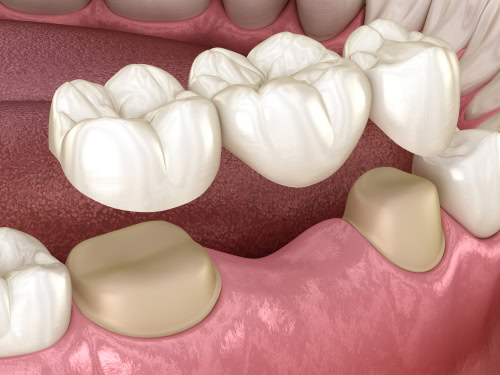Just as a bridge connects two pieces of land for uninterrupted travel, a dental bridge fills the space left by a missing tooth, restoring function and appearance. Without a bridge, roads become disconnected, making travel difficult—just as missing teeth can make chewing and speaking harder. By bridging the gap, both structures provide stability, support, and a seamless experience. With 178 million Americans missing at least one tooth, reliable replacement solutions are in high demand. Many of these individuals opt for teeth bridges, popularly known as dental bridges, which help improve their ability to eat and speak properly. If you want to close the gap left by a missing tooth, a dental bridge could be the perfect solution.
The Problems With Gaps Between Teeth
Losing a tooth creates a gap that can lead to various oral health issues. Food particles can become trapped in the gap, promoting plaque buildup and increasing the risk of cavities and gum disease. The accumulation of food debris and bacteria in the gaps can also lead to persistent bad breath.
Gaps in the front teeth can also affect speech and make chewing and biting more difficult. The uneven pressure from chewing with a gap can also cause adjacent teeth to wear, crack, or chip.
Aside from these functional issues, gaps also impact your smile’s look, potentially leading to self-esteem problems. Many people feel self-conscious about gaps in their teeth, which can make them smile less.
Fortunately, there are many remedies for these problems, such as dental bridges.
Dental Bridge Overview
A traditional dental bridge closes the gap to improve your oral function and smile’s appearance. These standard bridges rely on the following components:
- Abutments: We use the term “abutments” to refer to the structures that support the bridge. These can be natural teeth or dental implants.
- Pontics: The pontics are false teeth that replace missing teeth.
- Crowns: A crown is at each end of a traditional bridge. The crowns surround the pontic and are bonded to the natural teeth or implants next to the gap.
What Types of Bridges Are There for Teeth?

The most common type of dental bridge is a traditional bridge (pictured). This type has one or more pontics held in place by two dental crowns.
Another type of dental bridge is a cantilever bridge. Unlike a traditional bridge, a cantilever bridge uses only one dental crown for support. Dr. Hopkins will use a cantilever bridge when two abutments aren’t available.
Conversely, a Maryland bridge doesn’t use crowns at all. Instead, it uses metal or porcelain “wings” that Dr. Hopkins cements to the back of your adjacent teeth. This option is best when the gap is in the front of your mouth where chewing forces aren’t as strong.
If you’re looking for the most secure and long-lasting bridge option, an implant bridge may be right for you. Instead of relying on nearby natural teeth, Dr. Hopkins connects the bridge to mini dental implants that he secures in your jawbone. These strong titanium implants anchor the bridge and provide the most durable support.
For those looking for denture alternatives, Dr. Hopkins offers roundhouse bridges that connect to implants. A roundhouse replaces an entire row of teeth. This innovative prosthesis is typically supported by 10-12 mini dental implants.
Choosing the right dental bridge is a decision best made with Dr. Hopkins. With his guidance, you can find the best option for your needs.
How Teeth Benefit From Bridges
A dental bridge is a dependable solution for replacing missing teeth, offering multiple benefits for your oral health. It restores function, making eating and speaking easier. It also distributes your bite force evenly to prevent excess wear on surrounding teeth.
When a tooth is missing, nearby teeth may shift out of place, leading to misalignment. A bridge fills the gap, helping maintain proper alignment and stability in your smile.
Tooth loss can also contribute to jawbone deterioration, which may cause facial sinking over time. An implant-supported bridge prevents this by replacing missing tooth roots, stimulating the jawbone, and preserving its structure.
Beyond function, dental bridges enhance your smile by filling in gaps, creating a full, natural look. Restoring your smile can boost your confidence and improve your overall appearance!
It’s Time To Bridge the Gap! Schedule a Consultation Today
Teeth bridges restore oral function, comfort, and confidence while enhancing your smile’s look. If you’re missing a tooth and are struggling with speech issues, difficulty chewing, or low self-esteem, a bridge can help. By filling gaps, bridges support overall oral health and keep your teeth aligned. With various types of bridges available, you can trust that there’s a solution for your smile needs.
Ready to learn more? Contact Dr. Hopkins today to take the first step to a complete smile.